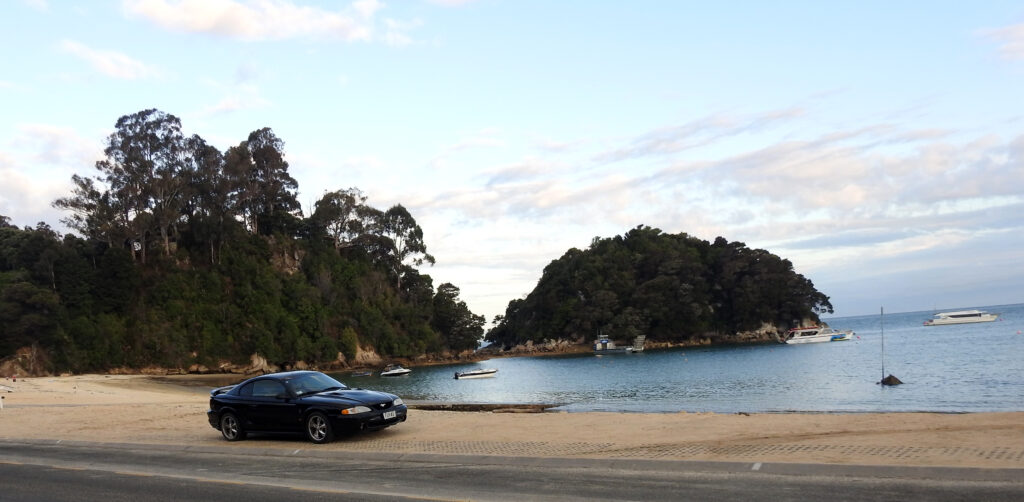Mustangs have a hold over Maria Jackett.
After owning a fourth-generation pony car in the States, she was enchanted by this Cobra version back in New Zealand
Words and photography by Patrick Harlow
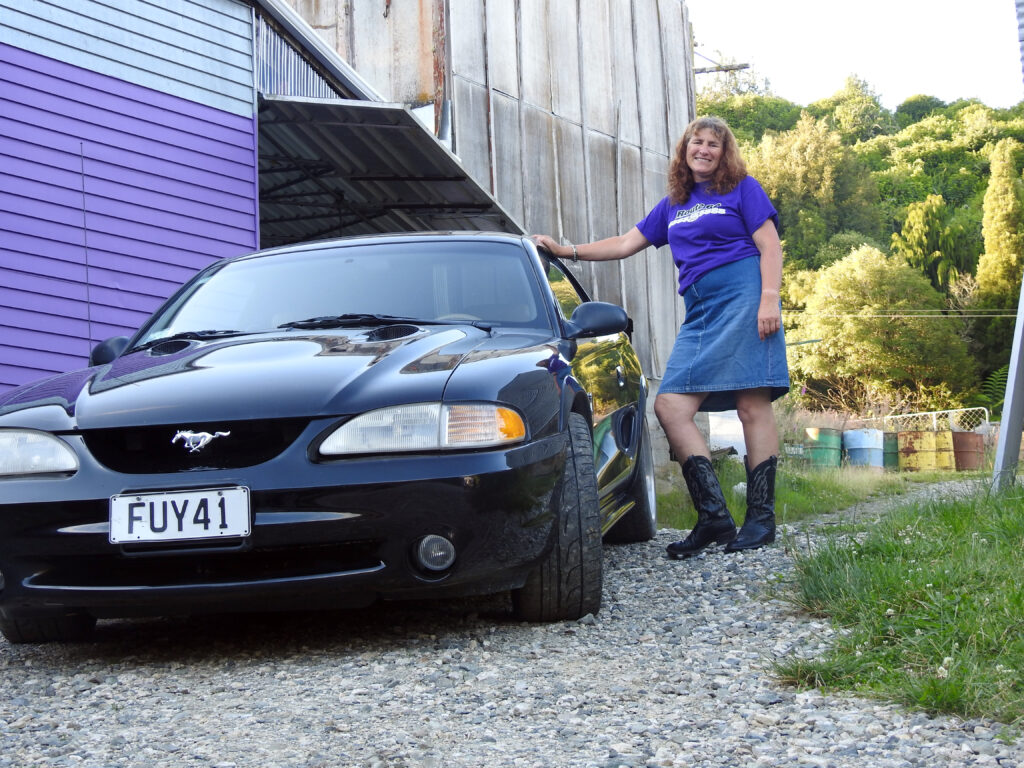
The Mustang almost ceased to exist during the late ’80s. Plans were made to replace it with a re-badged front-wheel-drive Mazda MX6. The Fox-body Mustang, barely recognised as a Mustang by the ill-informed, was stumbling towards the end of the longest production run of any Mustang in history, from 1979 to 1993. The third generation Fox-body looked more like a family two-door hatchback than a sports car and sales steadily declined. Ford, who at the time owned a large percentage of Mazda, not wanting to spend money developing a new car for a dying market, believed that a restyled Mazda MX6 might be the cheapest way to give the Mustang brand a shot in the arm.
Fortunately, enthusiasts wrote to Ford objecting to this ignominious fate for the all-American pony car. The iconic American Ford survived … just. Ford listened and at the last minute switched the name of the new car from Mustang to Probe, and it was under this name that the Ford-badged Mazda debuted new in 1989. Several Probes were also sold here. Having gained a stay of execution, the Fox Mustang limped on until 1994.
In 1991, Maria Jackett travelled to the US to work as a nurse, hoping to save enough money to return to New Zealand to buy an orchard. She naturally wanted to buy a Mustang to take on the whole US experience, but she was unimpressed with the Fox Mustang’s similarity to the Ford Laser Sport that she had owned in New Zealand. She test-drove a Firebird and a Camaro. She wasn’t allowed to test the Dodge Viper so, understandably miffed, she bought a pickup. The Mustang urge was still with her, though, and she hummed and hawed about it for the next few years.

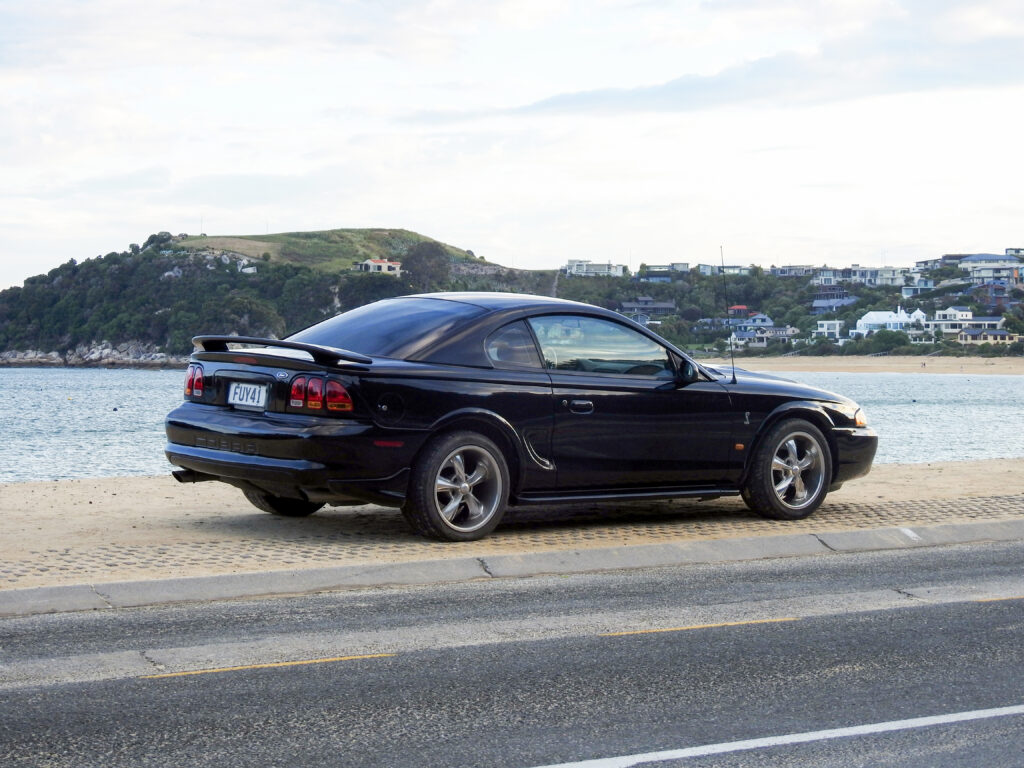
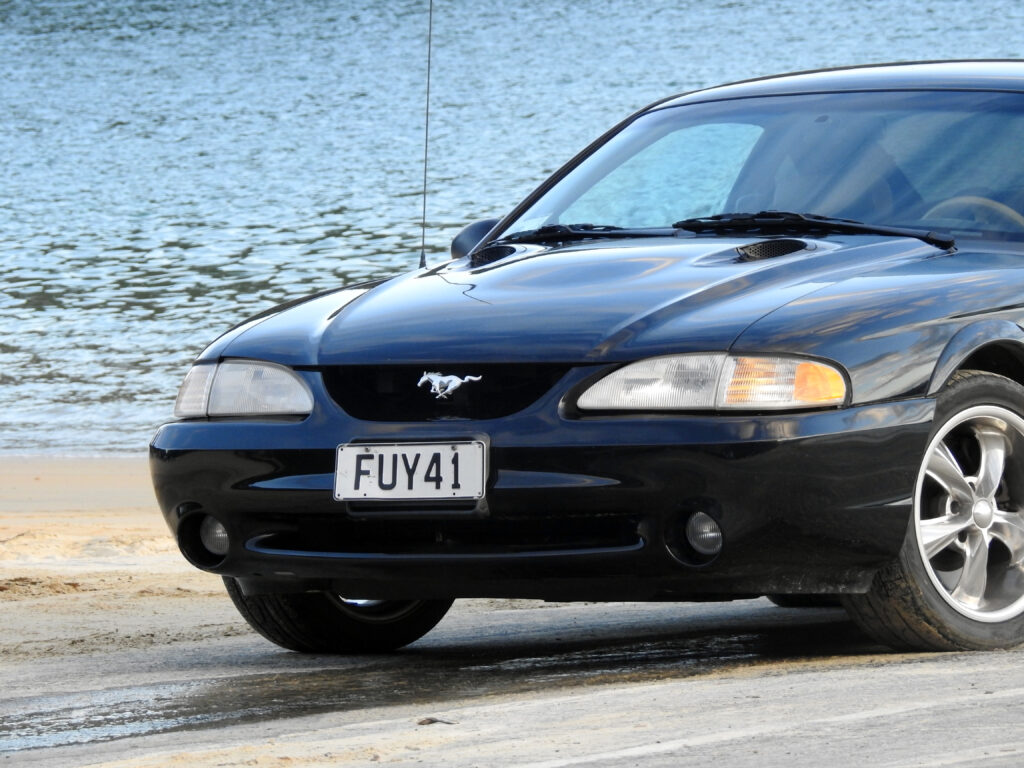
The apple of her eye
Fortunately, Ford was once again backing the Mustang, and they released what they declared was a completely new fourth-generation Mustang in 1994, albeit still on a modified Fox chassis. This new, fourth-generation Mustang, designed by Bud Magaldi, was based on a styling studio concept nicknamed ‘Arnold Schwarzenegger’.
Unlike the boxy Fox Mustang that had gone before it, the fourth generation incorporated several styling cues from its earlier generations. For the first time in many years, the hatchback was dropped in favour of the greater rigidity offered by a coupe. The changes rebooted the Mustang nameplate, with demand exceeding production. Even better, more Mustangs were sold in its first year than the total number of Camaros and Firebirds combined. The Mustang was back on top.
The new Mustang was the best-looking car Maria had seen in a long time. She was smitten, and with savings for her orchard well in hand, she decided that she was going to buy her first brand-new car — the generation four Mustang.
She bought the metallic-blue Mustang coupe as a Christmas present to herself in 1997. Despite being tempted, she avoided the V8 models and settled on a 3.8-litre V6 offering 108kW (150 bhp). This car was a lot more economical than the V8, but still a lot more powerful than the 60kW (80bhp) Laser Sport she had owned in New Zealand and, at US $15,000, a lot cheaper, too.
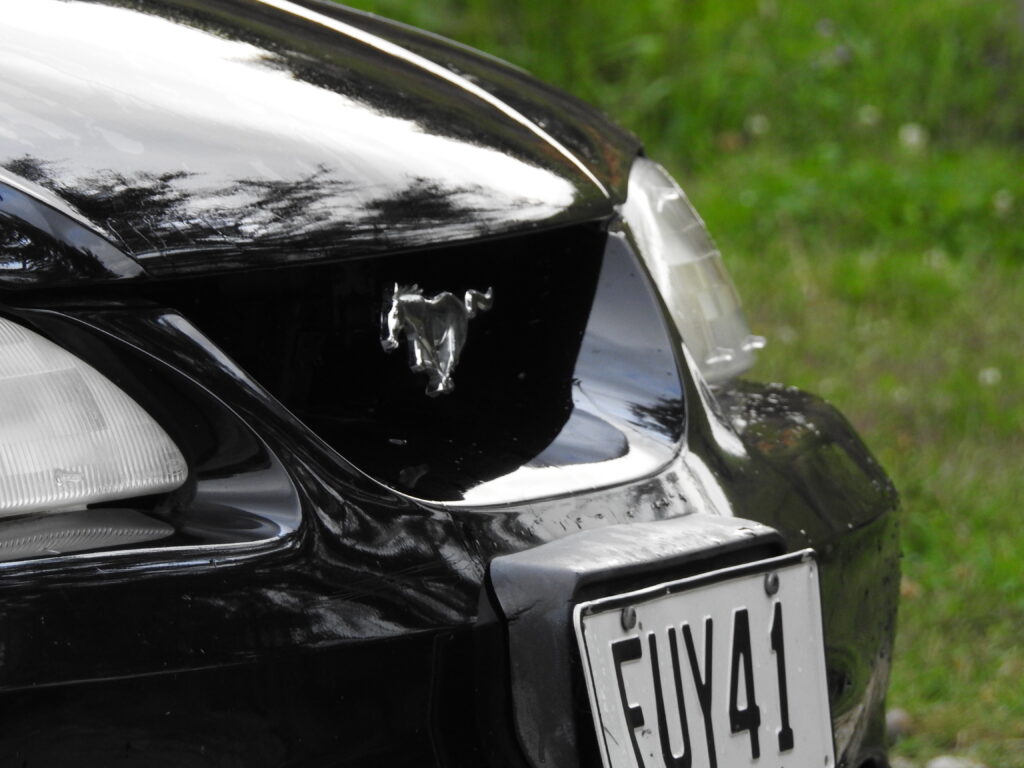

Smitten then bitten
Maria travelled through the US in her Mustang, selling it when she returned to New Zealand in 2000. A friend had convinced her it would not be economical to bring it back. A few years later, Maria bought her orchard in Motueka and life rolled on.
In 2014, she returned to America to drive across the country from New York to LA with a couple of friends. Their route included most of Route 66, a Mecca for classic Mustangs. She told her friends that one day she was going to buy another Mustang.
In 2017, her husband was looking at cars online and asked Maria if the Mustang he was looking at for sale in Napier was the same as the one that she used to own. She clicked the buy now button for $15,500.
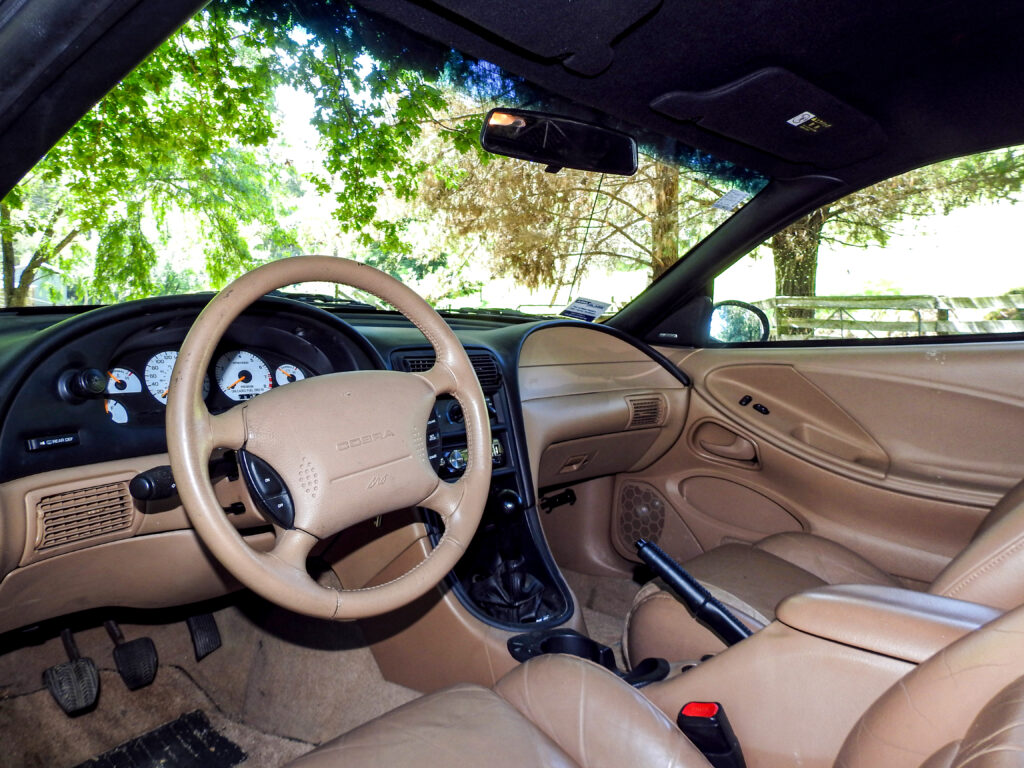
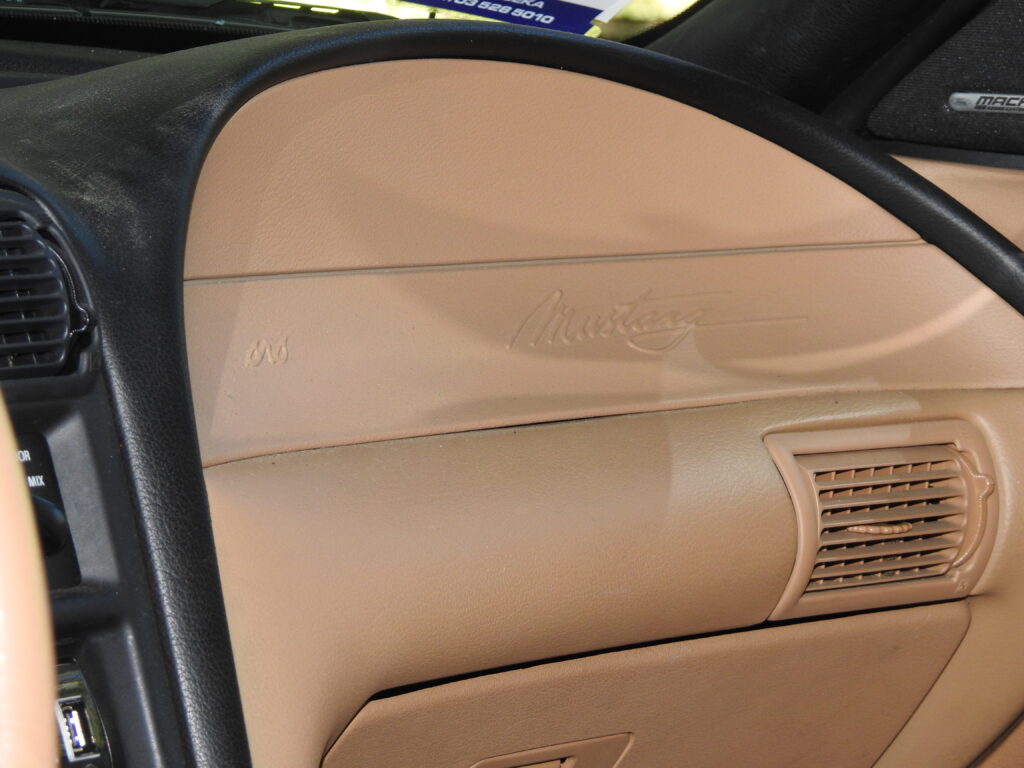
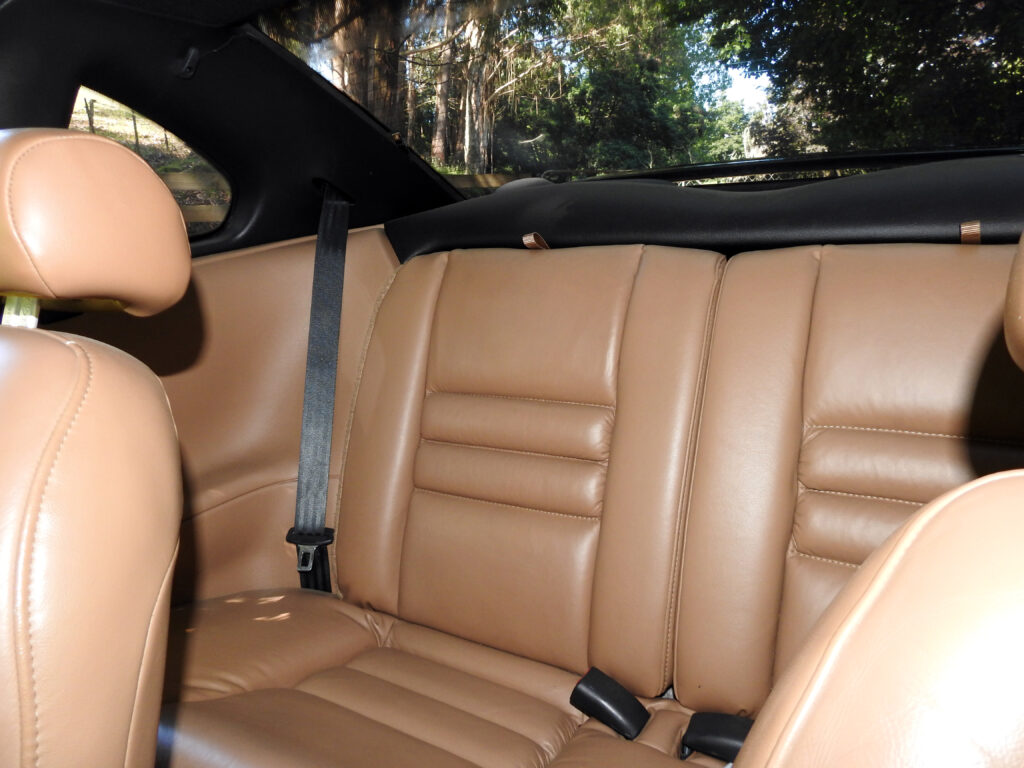
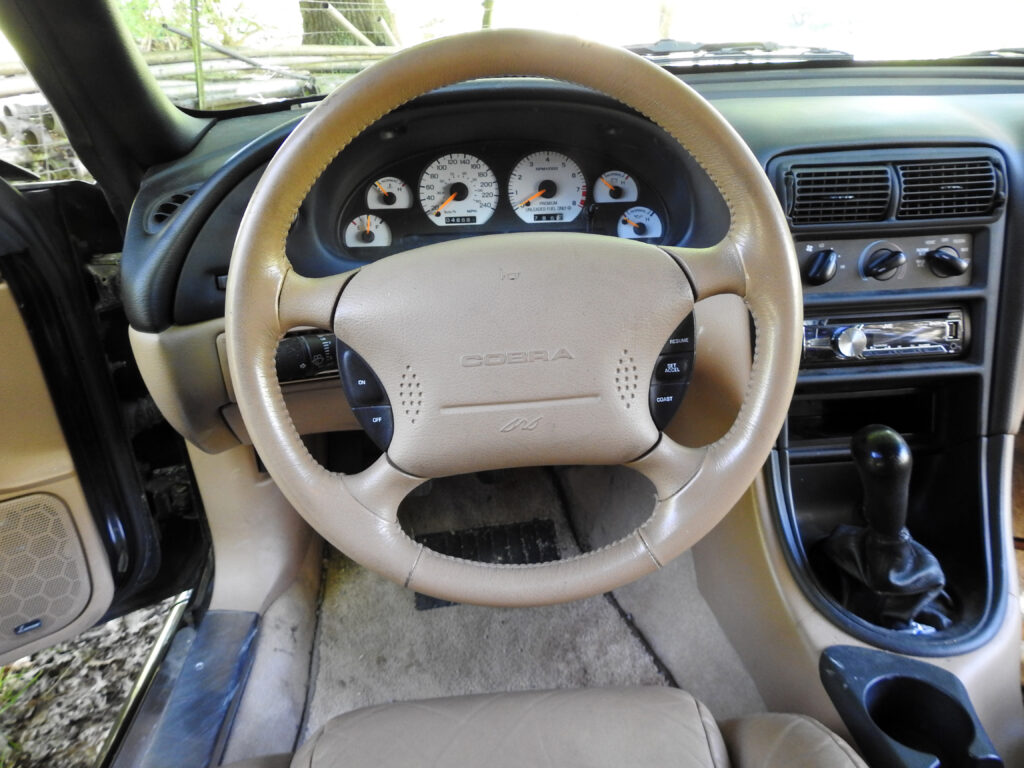
Is it a keeper?
The following weekend, she flew with her car-savvy husband to Wellington and travelled up to Napier with another friend and car guy. If these fellows gave this 1998 car a tick, it was hers. After the test drive, the smiles on their faces was all she needed. The deal was done. The current owner said the only reason he was selling it was that it was costing him too much in speeding tickets.
The Mustang brochure she had pored over before buying her car in the US listed the range available, which included the V6, a V8 GT, and the top of the range Cobra SVT. In 1998, the SVT was US$10,000 dearer than the base V6. And yes, the engine fitted to her second Mustang was the top spec, all-alloy 4.6-litre DOHC V8. It was only ever offered with a five-speed manual gearbox, as it was intended for ‘serious drivers’ only. This Cobra engine offered 227 kW (305bhp) compared to the GT’s 167kW (225bhp). Cobra engines were hand-assembled and finished with a metal plate engraved with the signatures of the two-person team that built it.
SVT stood for Special Vehicle Team. For the first time in many years, Ford was making a Mustang that could beat the Chevrolet Camaro. The Cobra SVT came with suspension tuned for better handling, bigger disc brakes, and wide high-performance tyres. It boasted unique black-on-white gauges, custom fog lights, Cobra fender emblems, and an SVT badge on the trunk. Options included powered leather seats, top-of-the-range stereo, cruise control, and air conditioning. Finally, the exhaust was tuned for power and emitted a delightfully sporty sound. In short, it was one of those cars that makes the owner look for excuses to take trips — and Maria certainly did that. With a 0–100kph acceleration of just 5.5 seconds and a top speed of around 230kph, this old snake could certainly bite the unwary.
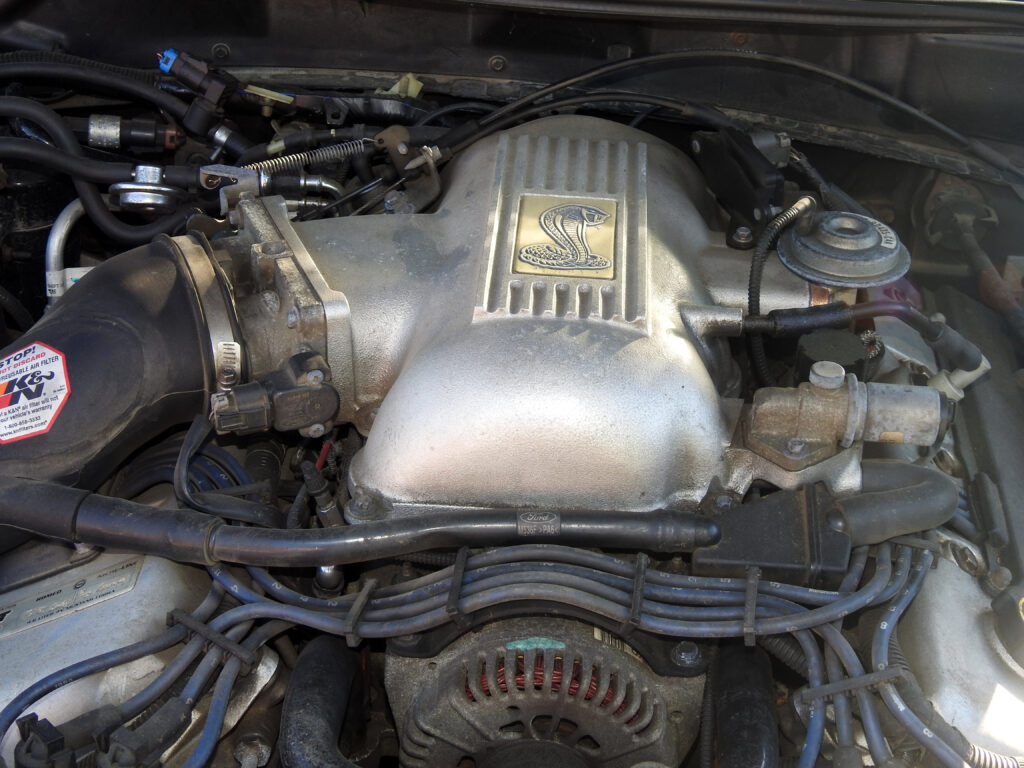
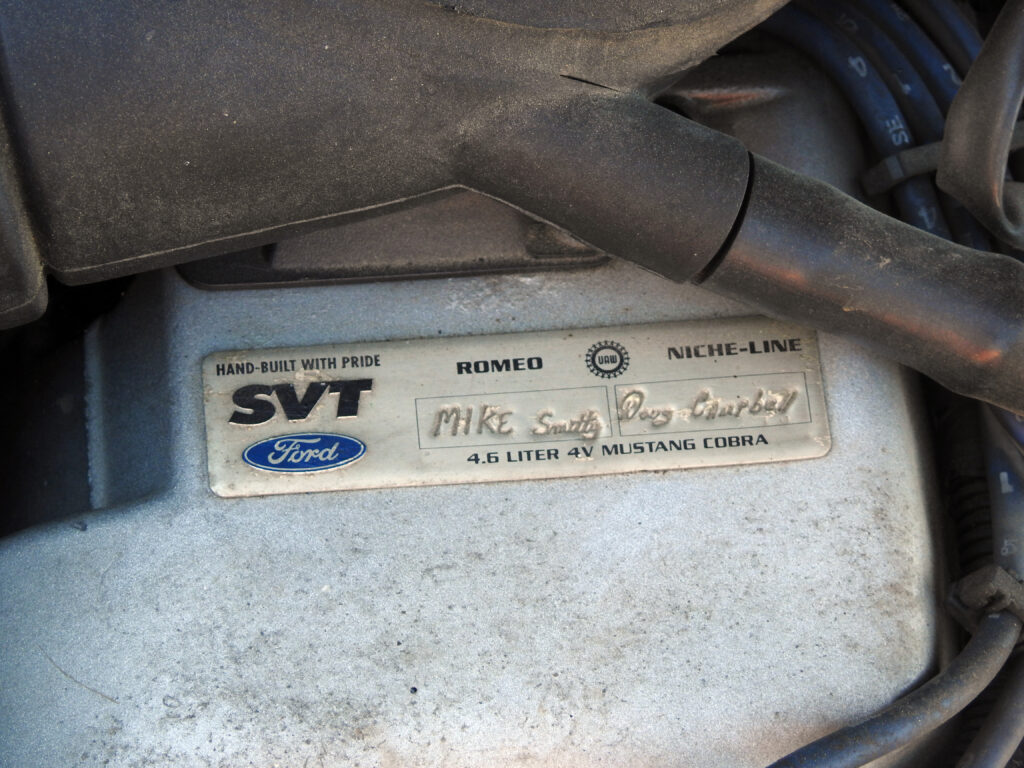
The allure of black beauty
Maria had timed the purchase of her black beauty nicely as Cobra cars’ prices snake upwards. And even though the fourth-generation Mustangs had been completely overshadowed by the fifth-generation retro Mustang that came out in 2005, prices for the Fox-bodies — and especially the fourth generation — have surged.
Maria encouraged me to take it for a drive along State Highway 6 to Blenheim and back to Motueka. Right from the start, I was impressed at how easy it was to drive this classic car. It was the first left-hand drive manual car I had driven, and apart from a few minutes spent getting used to it, it was quite straightforward. It was clear almost immediately that this car was as happy driving around town as it was roaring along the open road. One quick burst through the gears and it was apparent why the last owner collected so many speeding demerit points. The gear lever was a little bit notchy but engaged relatively quickly every time. The exhaust note was a pleasure in itself and surely helped to lure the previous owner into ticket territory.
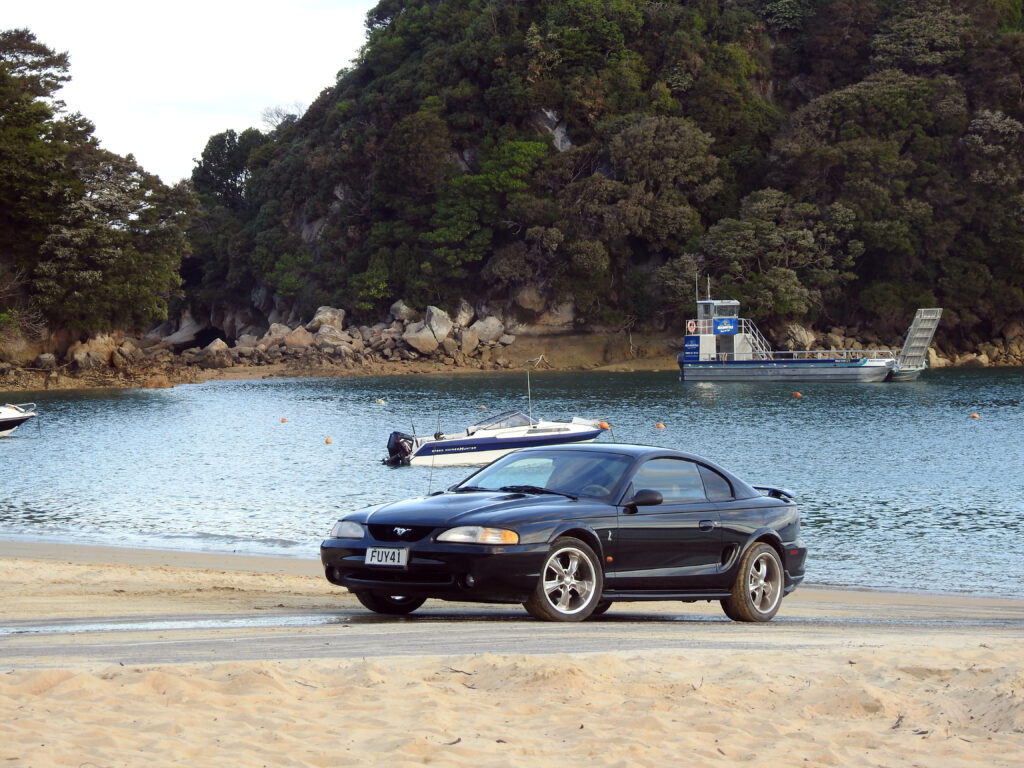
Reliable as
Travelling the windy roads between Blenheim and Nelson, the car’s only noticeable bad manners were that the rear end jumped around a little bit under power on some of the rougher corners, a telltale legacy of its antiquated live rear axle. Something that would be fixed in 2000 when Mustangs gained an independent rear end.
On the way back to Motueka, I struck Nelson in rush hour. It was stop-go traffic for about thirty minutes, and despite a lot of clutch work required, I never managed to stall the car once. Idling along with the stereo and the air-conditioning for company lessened the frustration of being parked on a 100kph road.
In the two years that Maria has owned the car, it has never let her down. The only major job has been to replace the rear brake callipers as they were sticking. She has no intention of selling the car this time and is looking forward to using it on long trips around New Zealand.
